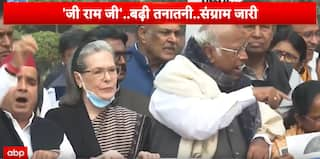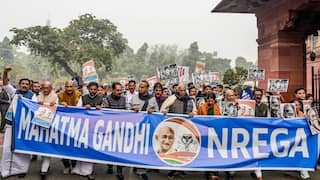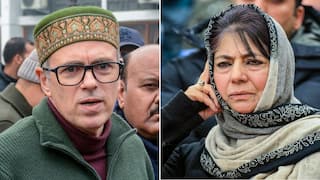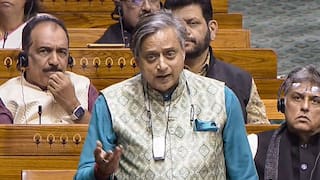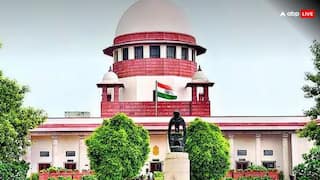Explorer
Ending Child Labour: Myth Vs Reality
Child labour is expected to spike once the lockdown is, for all practical purposes, lifted and different sectors of the economy -- or whatever is left of them -- even dare to return to their respective tracks.

Representational Image (AFP)
The date was June 6, 1998. The venue was the Geneva headquarters of the International Labour Organisation (ILO). And while representatives of 150 states were gathered there to discuss sundry labour laws and regulations, in walked the tall and weather-beaten frame of Kailash Satyarthi, with a handful of global child rights activists, clutching banners and posters, in tow. The motley bunch were all fired up: they shouted slogans, seeking an immediate stop to child labour. And this at a time when economic, social, political and cultural justifications for child labour were common.
The outcome of the audacious barge-in was historic: six days later, on June 12, emerged the ILO's Convention 182 that sought to end child labour and exploitation of all forms globally. Convention 182 caused much to cheer, followed by critical amendments to the laws that today govern issues related to child labour. Indeed, Satyarthi's flagship NGO, Bachpan Bachao Andolan (BBA), has so far rescued over 90,000 children from child labour, slavery and other forms of servitude. The path so far has been arduous and the task daunting, though there have also been several individuals and collective success stories.
The cases of Amar Lal, Kinshu Kumar and Manan Ansari, who were all child labourers before they were rescued and were able to overcome socio-economic challenges to become a lawyer, a social sector project officer and an MSc graduate, respectively, are testimony to the organizations' role as a change agent in a country where unspeakable crimes and rights abuses continue to be committed against children.
This was most sharply brought to the fore with the April 20 death of 12-year-old Jamlo Makdam whose life ebbed away on the road while walking 150 kms from the red chilli fields of Kannaiguda in Telangana to her village in Chhattisgarh. This and other appalling instances of child rights abuses are a stark reminder that much more needs to be done to eradicate the scourge -- there are an estimated 1.5 million children who continue to remain in servitude -- from India.
When the death of Jamlo and of many other adult migrant labourers as they trudged inhospitable terrain during the Covid-19 national lockdown failed to move the government to act, Satyarthi took no time to organise, bring together and exhort other Nobel laureates and international moral leaders to push governments "to commit 20 per cent of their Covid-19 funds to the 20 per cent of the world's poorest, including children living in extreme poverty". This may yet prove difficult to operationalise as governments across the world, and especially in India, may tighten their purse strings in the backdrop of their shrinking economies and the obvious choice of attending to their own populations first.
But in India, BBA and its sister organisation, Kailash Satyarthi Children's Foundation (KSCF), besides feeding hundreds of thousands hit economically by the lockdown, have continued to remain focused on rescuing and rehabilitating child labourers as the two organisations devised novel means to go beyond and brave the lockdown to rescue child labourers in cities such as Rajasthan and Gujarat in April and May.
Child labour is expected to spike once the lockdown is, for all practical purposes, lifted and different sectors of the economy -- or whatever is left of them -- even dare to return to their respective tracks. The lockdown and its attendant human miseries and costs have pushed hundreds of thousands of informal sector labour into penury. A bulk of the labourers, after suffering untold misery, have returned to their villages and now stare at a bleak and uncertain future. Many might likely be pushed into deeper poverty and destitution.
On the other hand, networks of traffickers, if organisational probes and past experience are anything to go by, are waiting to prey on children and push them into cheap labour. Thousands of child labourers who remain trapped in the dingy confines of crude factories will be forced by their faceless and nameless employers to return to work in conditions far more terrible than that existed before the lockdown was imposed.
In these circumstances, it becomes the bounden responsibility of governments, at the Centre and the states, to evolve and put into practice a robust regime of law enforcement and other sound legal strategies to curb child labour in these extremely difficult circumstances and especially when the pandemic's infection and death curves are from being flattened.
No state government, barring Rajasthan, has created a large enough protection fund -- Rs 100 crore -- to fight child labour and slavery and to restore children their childhood. They could yet do so. However, in the event that they remain indifferent to the problem or are unable to raise sufficient funds to take on the menace, they could rely on civil society organisations such as Satyarthi's to continue with the goals and objectives that the Nobel laureate envisioned when he began his struggle as far back as 1980.
Over the years, most governments have engaged in hyperbole, especially in the context of promises to end child labour and slavery. On June 12, I hope that governments understand that achieving Sustainable Development Goal 8.7 should be their biggest priority.
(Purvi Verma is a doctor by profession and a public health research scholar at JNU.)
Disclaimer: The opinions, beliefs and views expressed by the various authors and forum participants on this website are personal and do not reflect the opinions, beliefs and views of ABP News Network Pvt Ltd.
Follow Blog News on ABP Live for more latest stories and trending topics. Watch breaking news and top headlines online on ABP News LIVE TV
View More









